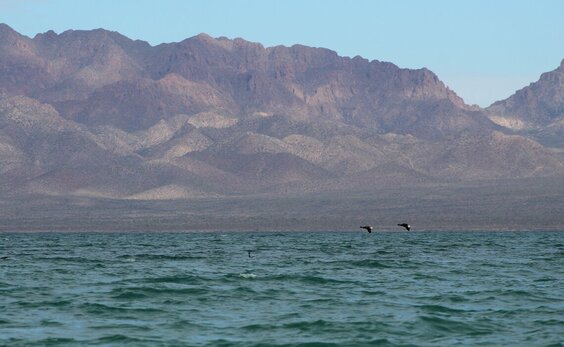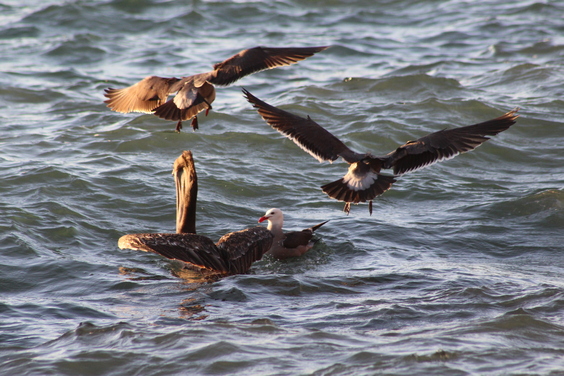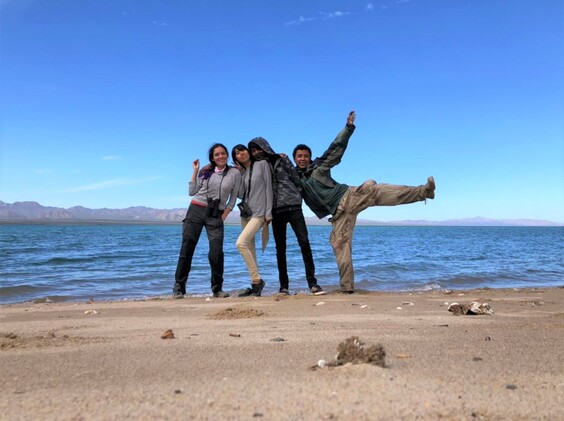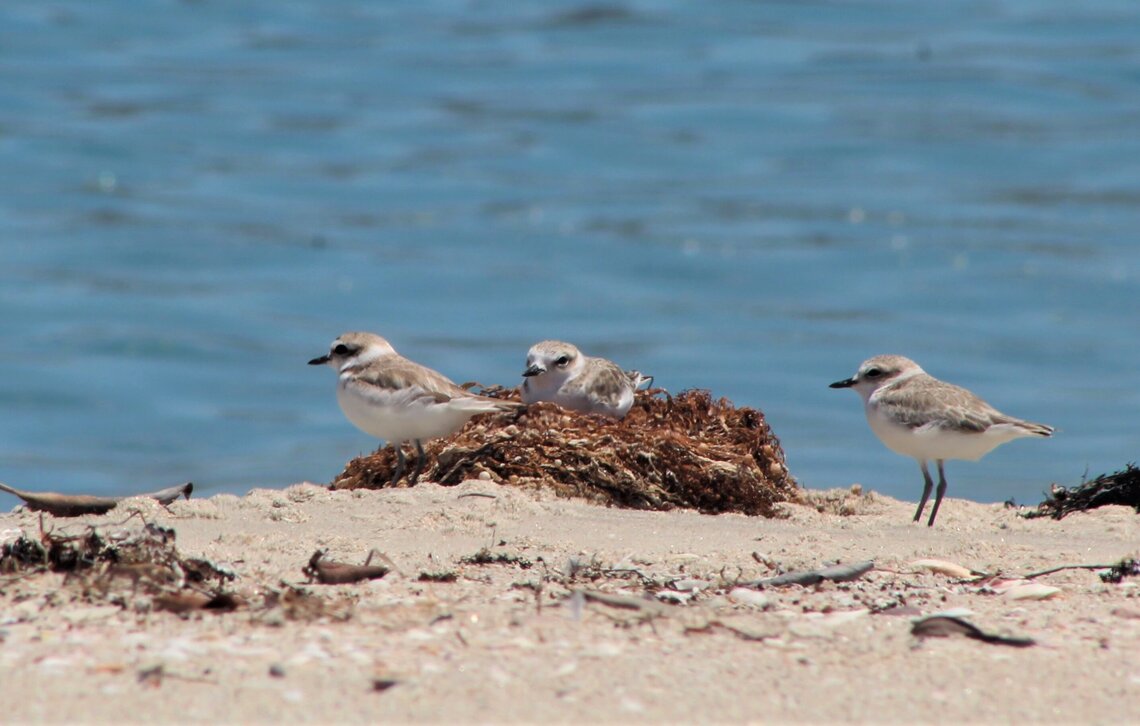By Paulina de Lourdes Camarena Gómez and Francisco Jaime Martínez Reyes, Waterbird Monitoring Program, Kino Bay Center for Cultural and Ecological Studies
Year after year, thousands of waterbirds utilize the Canal del Infiernillo, either as residents of the region, winter visitors, or by nesting in its various habitats. Its waters, mangroves, mud flats, bordered by towering mountains provide food and shelter in a relatively undisturbed ecosystem for large flocks of Black Brant, other waterfowl, and many shorebirds. It is an important breeding area for wading birds and shorebirds including American Oystercatcher, Wilson’s Plover, and Snowy Plover. Despite of all this bird activity, variety, and abundance, the area has been little studied.

The Canal del Infiernillo, known in the Cmiique iitom language as “Xepe Cosot”, which translates as “The little sea,” belongs entirely to the Comcáac community. It is in the Gulf of California, specifically in the Eastern Region of the Large Islands and comprises a narrow channel located between the central coast of Sonora, to the east, and Isla Tiburón, to the west. Due to the significance of the wetland for the community and the species that inhabit it, this area, made up of nine estuaries and the entire body of water within it, was designated in 2009 as a Ramsar site which recognizes the area as a wetland of international importance.
This year, the Kino Bay Center focused its monitoring efforts on updating information about the waterbirds present in the Canal. Likewise, the enthusiastic participation of young naturalists from the Comcáac community was, is, and will always be important in any monitoring activity conducted in the area. Élida Barnett and Luis López, who for some years have been part of the community monitoring group “Grupo Coijaac” (Brant), formed by the Center to train young people in waterbird monitoring techniques, joined the team. Supporting, learning, teaching, and getting to know their valuable territory even more, they enriched the entire experience in an extraordinary way by sharing their knowledge about the region, not only biological but also cultural, because of the close and respectful relationship of this indigenous group with nature.

For the Comcáac, birds have significant cultural importance. They represent deep aspects of your daily life and reflect your relationship with nature. The Brown Pelican (Tosni) and Heerman’s Gull (Canócni) used to be human fishermen before the “great catastrophe” (Hant haa cöima). The gull lent his harpoon to the pelican so that he could fish, hence its large beak, but it never returned it. That is why the Heerman’s Gull is always observed behind the Brown Pelican, looking for its harpoon.
The young people located groups of birds, identified species, and assisted in the data recording. Due to their constant participation and experience, they will be able to apply these techniques independently in future monitoring in their territory. More importantly, they will train other members of their community, helping to cultivate further interest in conservation.

Without a doubt, the conservation of the Canal del Infiernillo is of utmost importance, particularly for those birds that are vulnerable. This year, we recorded numerous species that possess some level of special status in Mexico (Norma Oficial Mexicana 059), including the Western Sandpiper, Snowy Plover, American Oystercatcher, Marbled Godwit, Reddish Egret, Black Brant, Heerman’s Gull, Yellow-footed Gull, Brown Pelican, and Elegant Tern. In addition, the Snowy Plover, Reddish Egret, Heerman’s Gull and Elegant Tern are on the IUCN Red List, classified as “Near Threatened” species. Another relevant aspect was the record of the Snowy Plover, the Wilson’s Plover, and Brant in numbers that represent more than 1% of their world population. All the above meet some of the criteria for designation of a Ramsar site.
By observing impressive groups of hundreds and thousands of waterbirds in these beautiful landscapes, we acquire a deeper understanding of how they use the habitats of the Infiernillo Canal, one of the few places that are so well preserved in large part thanks to the Comcáac community. The incredible things we’ve observed are hard to keep to ourselves. Sharing these sightings and experiences with others leads us to extend the knowledge and interest in conservation beyond just those of us who were present on these surveys.

